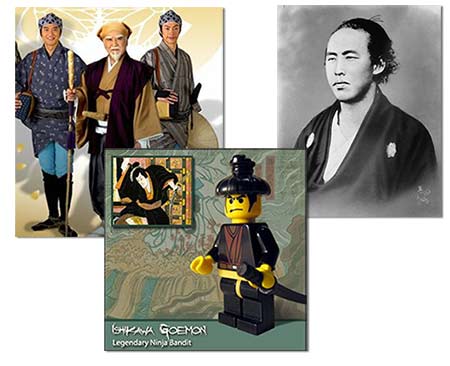A nation is defined by several factors, including language, geography and politics, but also by its shared mythology. In America we grow up with stories of George Washington telling his father “I cannot tell a lie” when asked about the cherry tree, or Paul Revere famously shouting, “The British are coming!” which give us a warm and fuzzy patriotic feeling. We (hopefully) realize later in life that a lot of these events didn’t actually take place, but are embellishments after the fact that have nevertheless become part of our culture. I’ve always enjoyed observing the Japanese version of this mechanism and see how its national folk heroes are made. In 1594 a ninja known as Goemon Ishikawa tried to assassinate Hideyoshi Toyotomi, the Japanese ruler who’s interesting because he started out as a peasant yet became the most powerful man in the country. The attack failed, and when Goemon was publicly executed by being boiled alive in a pot he became a kind of national hero to the country. (Goemon from Lupin III is his descendant.) The feudal lord of the Mito region during the early Edo Period became an unlikely folk hero when a book called The Record of the Wanderings of Mito Komon was published, making the fictional adventures of the kindly old samurai who flashed the official mark of the Tokugawa clan to shame evil-doers as famous as Buffalo Bill and Billy the Kid. And then there’s one of the most respected names in Japanese history, Ryoma Sakamoto, who almost single-handedly came up with a plan to force the Tokugawa Shogunate to surrender power after an nearly bloodless conflict, which led to the establishment of Japan as a modern nation. His adventures have been written about and embellished so much that many apocryphal stories are believed to be real.
















